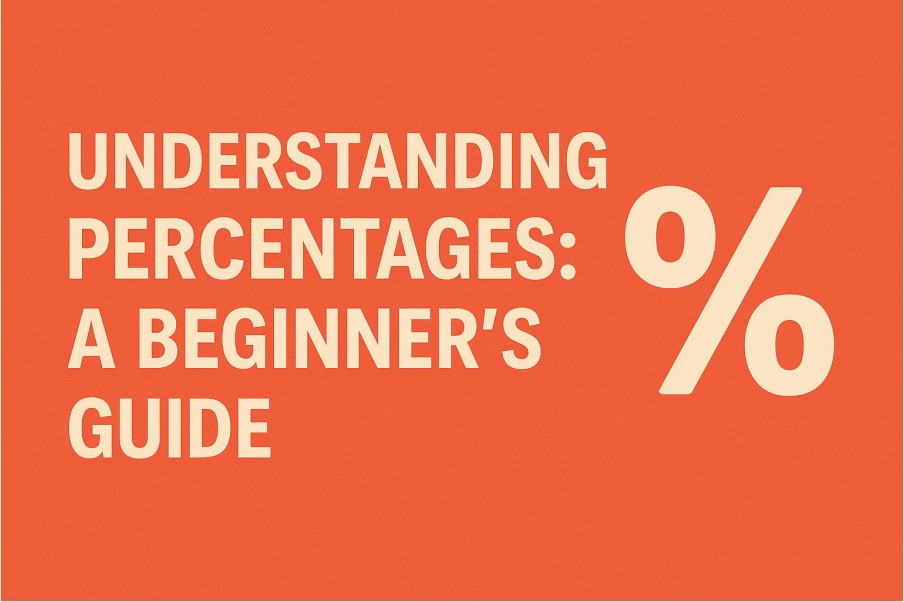Introduction
Percentages are everywhere—from shopping sales to exam scores to interest rates at the bank. But what do they really mean, and how do you calculate them? In this post, you’ll learn how percentages work, how to convert between percentages and decimals, and how to use them in real-life situations.
What Is a Percentage?
A percentage means “per hundred.” That is, any value over hundred. The symbol of percentage is % which stands for “out of 100.”
For example:
- 25% means 25 out of 100
- 50% means 50 out of 100
- 100% means the whole thing
It’s just a way to compare part of something to the whole of it.
For Real-Life Examples of Percentages Thus:
- A test score: 80% means you got 80 out of 100 marks
- Discounts: 30% off means you pay 70% of the price
- Battery life: 15% means your phone is nearly dead!
Also Read: Understanding Fractions Made Easy
How to Convert Between Percent, Decimal, and Fraction
Format Example
Percent 25%
Decimal 0.25 (Just divide by 100)
Fraction ¼ or 25/100 (Then simplify)
Note:
- To convert percent → decimal, divide by 100. If you asked to convert percentage to decimal. This is how you will do it as shown below:
- 75% = 75 ÷ 100 = 0.75
- To convert decimal → percent, multiply by 100. Also, when you are asked to convert decimal to percentage, this is how you will do it too.
- 0.3 = 0.3 × 100 = 30%
How to Calculate a Percentage of a Number
The formula to calculate percentage is:
Percentage of a number = (Percent ÷ 100) × Total
Example 1:
What is 20% of 200?
→ 20 ÷ 100 = 0.2
→ 0.2 × 200 = 40
So, 20% of 200 is 40
Example 2:
What is 15% of 80?
→ 15 ÷ 100 = 0.15
→ 0.15 × 80 = 12
So, 15% of 80 is 12
You Can Also Read: The Sayawa (Zaar) Story During the Pre-Colonial Era
How to Find What Percent One Number Is of Another
Its formula is:
Percent = (Part ÷ Whole) × 100
For example:
What percent is 30 out of 50?
→ 30 ÷ 50 = 0.6
→ 0.6 × 100 = 60%
So, 30 is 60% of 50
Let’s Check This Real-Life Scenario:
You scored 18 out of 25 on a quiz. What’s your score in percent?
→ 18 ÷ 25 = 0.72
→ 0.72 × 100 = 72%
Your score in percent is 72% which means you scored 72%
Conclusion
Percentages are an essential part of everyday math. Whether you’re shopping, studying, or saving, knowing how to work with percentages gives you an edge. Just remember that:
- Percent means “out of 100”
- Use simple formulas
- Practice with real-life situations
Once you understand percentages, you’ll see them everywhere—and you will have confident using them.

